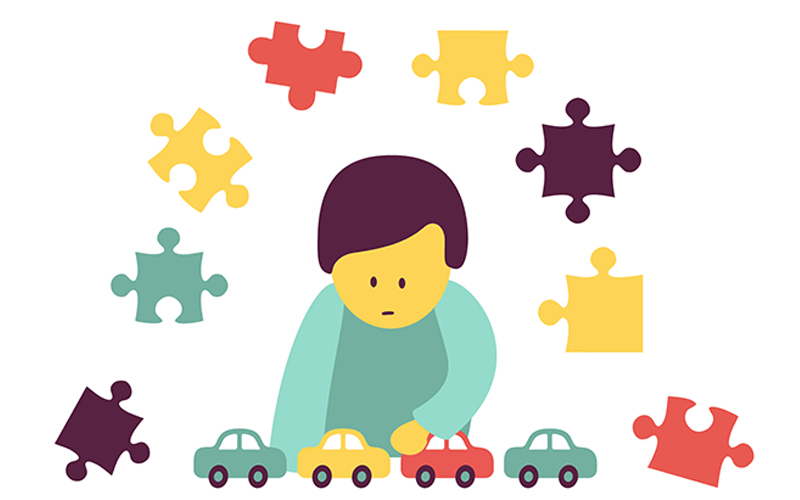

Importance of Early Detection and Intervention of Autism Spectrum Disorder

Viviane Cappellari
DHA License Number: 00082911-001
Head of Speech & Language Department
MS, SLP

Early diagnosis of Autism Spectrum Disorder has generated big debates over the past decade. Some professionals find it inappropriate to “label” young children, when there are so many other disorders that may present similar features. These include language delay, sensory integration issues, and social-interaction difficulties, which could easily be misdiagnosed as Autism. On the other hand, the ultimate goal of early detection of autistic features and diagnosis is to ensure that children who are on the spectrum have access to an early intervention program and their parents are not left without professional support. Zwaigenbaum et al (2009) consider that children below 2 years of age can be reliably diagnosed which is important to note as many parents report considerable regressions in development by their child’s second year of life. Some authors also highlight how crucial it is to start intervention as early as soon as possible, considering that the second year of a child’s life is a particularly critical period of the development.
Considering that the first years of a child’s life is a dynamic period of brain growth and plasticity, early detection and intervention have great potential for positive changes in development and long-term outcomes such as effective improvement on IQ, language skills and social interaction. Based on these statements, lack of intervention may contribute to a progression in symptoms, especially considering that Autism is a lifelong neurodevelopmental disorder and the possibility of managing or reducing some of the features may lead to less repetitive behaviors and more verbal and social interaction. Researchers mostly compare results between children who start receiving therapy when they are older than 48 months to younger children, affirming that early intervention may lead to significant gains in their development.
The evidence that early intensive education and therapies significantly improve developmental outcomes, is support by approaches that combine developmental and behavioral strategies. The studies refer that having only Behavioral strategies without a focus in social interaction and language may reduce the chances of developing important skills at early age. An example is Early Start Denver Model – ESDM which integrates concepts of applied behavioral analysis, but mainly focusing on social interaction, addressing behavioral management strategies along goals for language skills, joint attention, emotional reciprocity, functional and symbolic play. The UCLA Lovaas is another evidence-based model also developed to promote young children’s social communication and imitation skills. Although, both programs have been previously proved to be effective, but in recent studies further was suggested. There other approaches which not evidence-based, but they show great results in clinical practice such as DIR Floor time therapy, More than words- Hanen method and Sensory Integration. As in any other disorder, there is no single approach that may suit all children. Be aware of what is available helps parents and therapists to make decisions for better results.
An early intervention program should also consider the overall wellbeing of the child, since children on the Autism Spectrum can present medical and/or sensory disorders that may affect development and behavior. It is well known that underlying medical issues can affect a child’s compliance to treatment, especially because they are often not able to report illnesses. Children with Autism may present behavioral changes such as aggression and self-injury, due to difficulties in regulating or as a reaction to pain or discomfort.
Family participation and education is the key for a successful early intervention program. Parents must be guided and trained to take an active role in their child’s treatment process. A family- and child-centered intervention should consider all members in the family, lifestyle, preferences, priorities and cultural values. Parents should be encouraged to take part in setting targets and finding strategies to implement into natural routines throughout their child’s day. Opportunities to implement concepts targeted in therapy such as joint attention, imitation, playing skills and verbal interaction into real-life increase the chances of generalization.
Another important point is related to the time frame of implementing early intervention programs. The National research council recommended 5 hours a day, 5 days per week of therapies. However, some more recent studies indicate that less number of hours of direct therapy for young toddlers with ASD, especially for those who have consistent parent participation, may present more gains in social communication.
There is still a lot to learn about Autism Spectrum Disorder and early intervention. However, it has to be taken in consideration that a great number of studies have proved that children on the Autism Spectrum make greater gains when following an early intervention program, with professional support and parents’ participation.
Sources:
- Green J, Charman T, McConachie H, et al; PACT Consortium. Parent-mediated communication-focused treatment in children with autism (PACT): a randomised controlled trial. Lancet. 2010;375(9732): 2152–2160
- Kasari C, Gulsrud AC, Wong C, Kwon S, Locke J. Randomized controlled caregiver mediated joint engagement intervention for toddlers with autism. J Autism Dev Disord. 2010;40(9):1045–1056
- Landa RJ, Holman KC, O’Neill AH, Stuart EA. Intervention targeting development of socially synchronous engagement in toddlers with autism spectrum disorder: a randomized controlled trial. J Child Psychol Psychiatry. 2011;52(1):13–21
- Lord, C. (1995). Follow-up of two-year-olds referred for possible autism. Journal of Child Psychology and Psychiatry and Allied Disciplines, 36(8), 1365–1382.
- National Research Council. Committee on Educational Interventions for Children with Autism, Division of Behavioral and Social Sciences and Education. In: Lord C, McGee JP, eds. Educating Children with Autism. Washington, DC: National Academy Press; 2001
- The National Council for Special education- Educating Persons with Autism Spectrum Disorder – A Systematic literature review. Bond, C.; Symes, W.; Hebron, J.; Humphrey, N. and Morewood, G. University of Manchester, UK 2016.
- Zwaigenbaum L, Bryson S, Lord C, et al. Clinical assessment and management of toddlers with suspected autism spectrum disorder: insights from studies of high-risk infants. Pediatrics. 2009;123(5):1383–1391
- Zwaigenbaum L, Bauman ML, Stone WL, et al. Early identification of autism spectrum disorder: recommendations for practice and research. Pediatrics. 2015;136.


